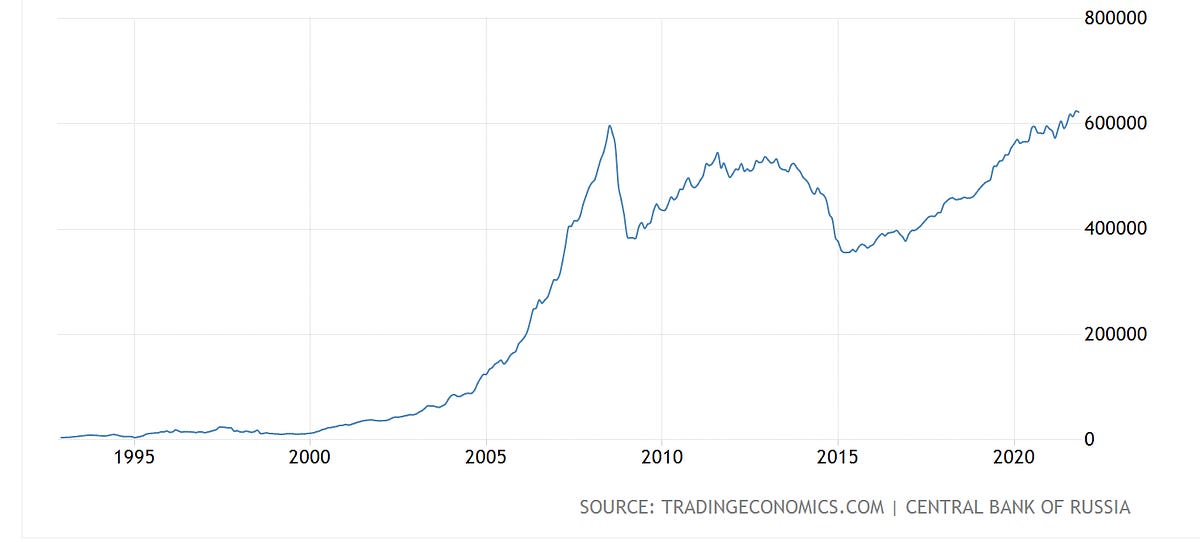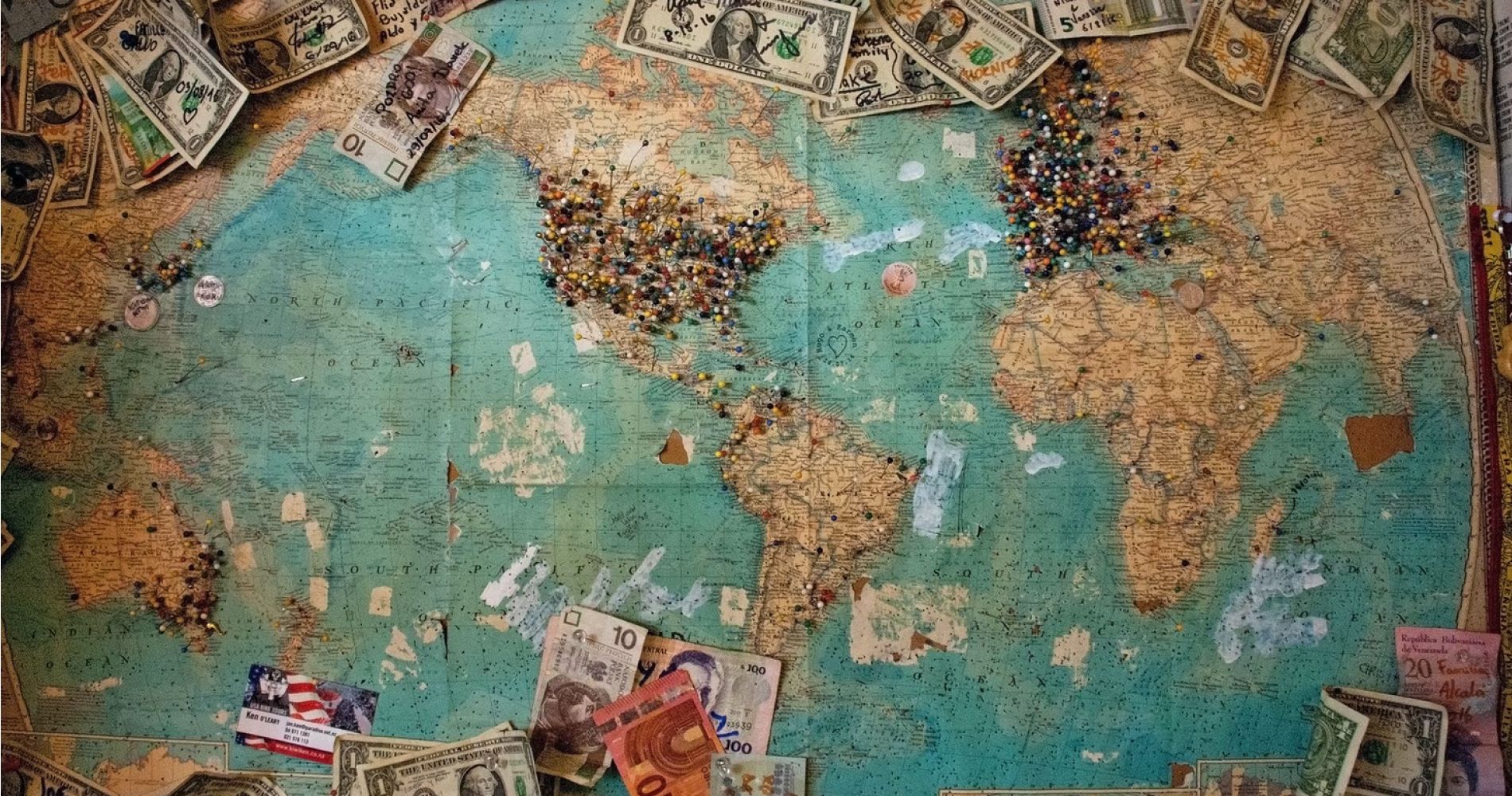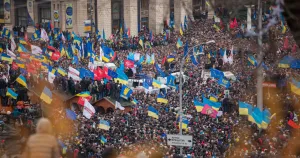It’s hard to come up with a “take” on the crisis unfolding in Ukraine that’s simultaneously novel, correct, and sympathetic to the enormous plight of Ukrainian citizens.
That said, there are some things that bear repeating. First and foremost, this is a war of choice on the part of Vladimir Putin, as Ukraine posed no serious threat to Russian security. Second, this marks a dramatic shift in world politics. The distribution of power in the international system has been trending towards multipolarity—away from US-led unipolarity—for some time now, but the political-economic schism between the United States and Russia will almost certainly accelerate what’s already happening.
While we work very hard to provide a new way of seeing politics and the stories that matter to democracy, when it comes to a story like this one, with consequences developing in real time, the best thing we can do is offer our audience an array of individuals and sources of information so that they can keep themselves informed every step of the way.
That’s why we’ve largely ignored this elephant in the room so far, except to indicate where we’d gotten something right a while back, which helps us better understand why democracy is facing this challenge. Right now, however, here are some of the sources we’ve found most insightful, unique, or generally indispensable. We’ll be back Sunday to hopefully take a look at how we got here with fresher eyes.
Social Media
Rob Lee
Sadly, I am going to start a thread on the Russian-Ukrainian War of 2022. I want to emphasize that everyone should be skeptical of videos and photos that have not been confirmed, which will include some of the posts in this thread.
— Rob Lee (@RALee85) February 24, 2022
Rob Lee is a PhD student in the Department of War Studies at King’s College, London. He’s spent the past several weeks compiling lengthy threads of pictures, videos, and general updates on military movements in Russia, Ukraine, and Belarus. If you want to stay aware of how this war is playing out on the ground, check out his Twitter.
Max Seddon
Vladimir Putin has launched a massive invasion of Ukraine.
— max seddon (@maxseddon) February 24, 2022
The FT will be tracking every development with me and @NastassiaAstra in Moscow, @polinaivanovva and @JohnReedwrites in Kyiv, @HenryJFoy in Brussels, @VJMallet in Paris, and @GuyChazan in Berlin.https://t.co/ctrrkeIH4f
Max Seddon is the Financial Times Moscow bureau chief. As a firmly established journalist on the Moscow scene, he has access to sources in the Russian business community in addition to a deep and general knowledge about the unfolding situation. He’s got both what you need to stay up-to-date and insights as to the history and context of the situation.
Michael Kofman
I made a basic map, with red arrows, which I have held off from posting because I believed it would not be responsible to put something out like that unless it was clear the war had begun. This is just one very incomplete estimate of what the Russian op plan might look like. pic.twitter.com/FQDcwV5MpV
— Michael Kofman (@KofmanMichael) February 24, 2022
Michael Kofman is an analyst of Russian security policy. He’s put together some useful maps that can help folks who are interested get a sense of the broad scope of Russian military movements across Ukraine, as well as sharp analysis of the history of and current developments in the crisis.
News Outlets/Articles
Chartbook #68, Adam Tooze

Adam Tooze is a British economic historian who teaches at Columbia University. In January, as the crisis in Ukraine was really starting to pick up, he wrote an excellent analysis on his blog of Russia and Ukraine’s political economies, which lays out crucial context for the uptick in tensions and discusses some obstacles to an effective sanctions package. It’s a bit wordy, but generally accessible and worth the reader’s time.
The Power of the Dollar, Bryce Johnston for Spectacles

I’d be remiss if I didn’t re-up one of our own pieces from guest writer Bryce Johnston, from just two days ago. Bryce explains just how crucial the strength of the US dollar is for any effective sanctions package. If you want to understand how the financial sanctions announced today actually work, make sure to check this out.
Kyiv Independent

The Kyiv Independent is an English-language Ukrainian news outlet that’s been covering every detail of the invasion and the leadup to it. They’ve got short and accessible articles that should give the lay reader an acute sense of what’s happening on the ground.
The Financial Times

As a rule of thumb, news outlets geared toward a business audience offer excellent, straight-to-the-point coverage, because their audiences rely on accurate information to help them make financial decisions. The Financial Times is no exception, and they’ve made some of their coverage of the Russian invasion free.
I wish there was more that we could do at this point, but unfortunately there isn’t. One option is to call your member of congress (if you don’t know who yours is, follow this link) and request that they support any future legislation facilitating the resettlement of Ukrainian refugees in the US. There are already tens of thousands of displaced Ukrainians, and while the vast majority of them will surely go to Europe it’s crucial that we don’t leave anyone behind, as the US unfortunately did during the Syrian refugee crisis and to a lesser extent in the wake of the fall of Afghanistan to the Taliban.
There are other worthwhile figures to follow, articles to read, and outlets to check out, but if you want to get a better handle on the crisis, the above make for a good start. All around, it’s hard to escape a powerful sense of dread. The chances of NATO being pulled directly into the conflict are surpassingly slim but not zero. Even without any direct involvement, we’ll probably spend the next few months—if not years—watching a stupid and cruel invasion unfold. The world has changed, and not at all for the better. We’ll talk about that subject more on Sunday.
Subscribe to Spectacles





Comments
Join the conversation